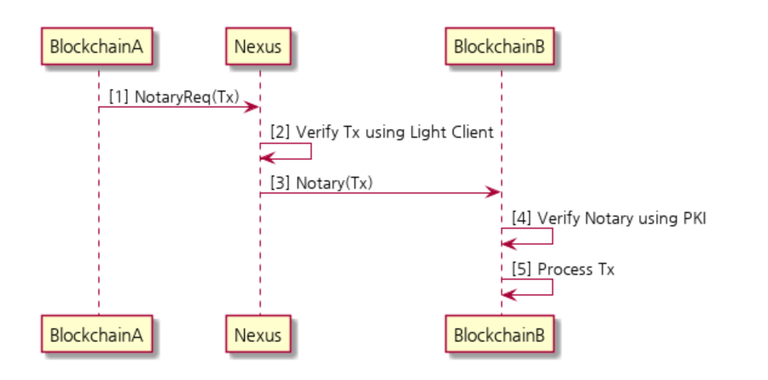Last time we wrote a brief overview of the ICON project where we introduced the background, the team, the concept and some road map events. Today, just one day before their launch of the mainnet, we are going to dive deeper into this project by exploring its white pape.
Ideology
In short, ICON aims to build a blockchain network (Nexus) based on Loopchain protocol. We have summarized three major differences between Nexus and current mainstream blockchain networks such as Bitcoin or Ethereum.
- A truly decentralized exchange
ICON aims to connect all the currently closed blockchain eco-systems. The most practical of such a system is obviously a decentralized exchange. Currently there are two kinds of DEX. Firstly, DEXs like Ripple, Stellar and Bitshare where exchange assets are executed in a decentralized way but people must trust the asset issuer. We would like to call these pseudo-decentralized exchanges (pDEX). Meanwhile, there are also exchanges like EtherDelta, 0x and Bancor where the original currencies got directly exchanged in a decentralized manner. However, all these exchanges are only compatible with Ethereum based tokens. We would like to call them restriced DEX (rDEX).
ICON claims to realize a real DEX by connecting independent blockchain to Nexus network (they also call this ICON republic network) through blockchain transmission protocol (BTP). In this protocol, each external blockchain participate in the Nexus network through representative nodes that are voted from each independent network. The Rep node then transform into a participant of Nexus through Portals. The basic process of BTP can be demonstrated using the following graph.

The above seemingly reasonable process contains several unexplained technical details.
Firstly, most existing blockchain does not have this voting system embedded, how can ICON incorporate such mechanism into existing protocols such as Bitcoin?
Secondly, how does Nexus network verify tx of other blockchains?
Thirdly, they also claimed that they will follow the Bancor protocol to build the DEX which require a decent size reserved token for each currency pair. How would they build up these reservoirs at the first place?
- Smart contract that does not run on the distributed virtue machine
Nexus can be served as a “truly” decentralized exchange, it can also be a smart contract platform. To run a smart contract on Etheruem, all the virtue machines on every Etheruem node must run the script and the return value will be recorded on the blockchain. This makes executing the smart contract functions expensive with an unpredictable execution time.
Nexus propose to solve this problem by launching a decentralized DApp store. Whenever someone wants to run functions in a smart contract, they pull the DApp from the store, run it locally and post the return value. Only the record of pulling the DApp and return value will be recorded on the blockchain. This can potentially be very interesting because it greatly simplifies the data structure required to record on the blockchain. However, they did not include the details of how this can be realized in their white paper and as readers we expect more.
- Consensus protocol that does not require mining
Their last point is that they have a consensus protocol that does not require mining called LFT. LFT is an enhanced Byzantine Fault Tolerant based algorithm that promotes faster consensus and ensures the finality of the consensus without possibility of forks within the network. LTF supports faster consensus by creating a group among trusted nodes. LFT can accommodate diverse consensus structure by allowing such groups or nodes to freely determine the number of votes.
At first glance they sound really like stellar consensus protocol. However, they only dedicated one page to describe how this protocol works and after going several times through it, I don’t think they have made a good job explaining it.
Jinho Yoo was the key contributor of their github repository. https://github.com/theloopkr/loopchain/commits/master The github repo here has not been updated for a month.
Summary
The ICON promises to do a lot and to be honest, most of their visions and methodologies make a lot of sense. However, they have not been actively providing information on how they will deliver these ‘fancy’ structures. The entire whitepaper introduces tons of concepts, multiple protocols, node types, channels and voting mechanism. However, they have not clearly explained how each component connect with each other to build the entire system. They also did not mention the potential risks of the consensus protocol like IOTA and Bitcoin did in their whitepaper. There are very few easy to understand examples in the white paper which make the concepts vague and hard to understand. We doubt if it is intentionally designed in such a way so that people can have unrealistic expectation to their product.

Congratulations @fanimal! You have completed some achievement on Steemit and have been rewarded with new badge(s) :
Click on any badge to view your own Board of Honor on SteemitBoard.
For more information about SteemitBoard, click here
If you no longer want to receive notifications, reply to this comment with the word
STOPCongratulations @fanimal! You have received a personal award!
Click on the badge to view your Board of Honor.
Do not miss the last post from @steemitboard:
SteemitBoard and the Veterans on Steemit - The First Community Badge.
Congratulations @fanimal! You received a personal award!
You can view your badges on your Steem Board and compare to others on the Steem Ranking
Vote for @Steemitboard as a witness to get one more award and increased upvotes!